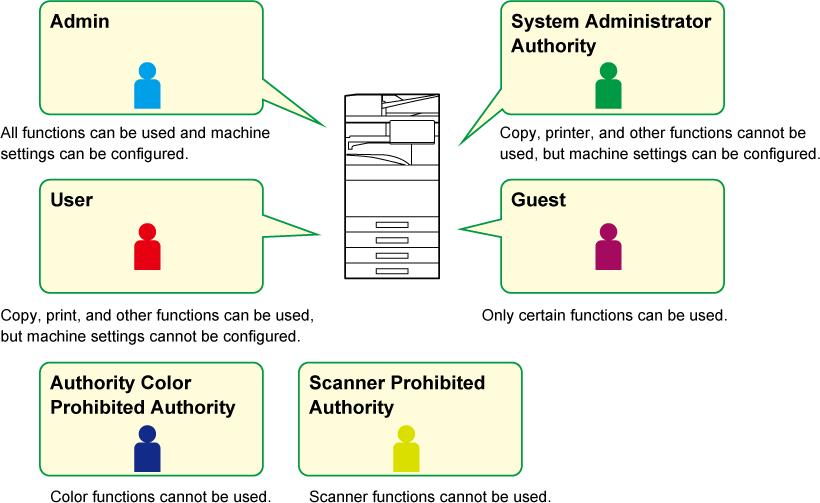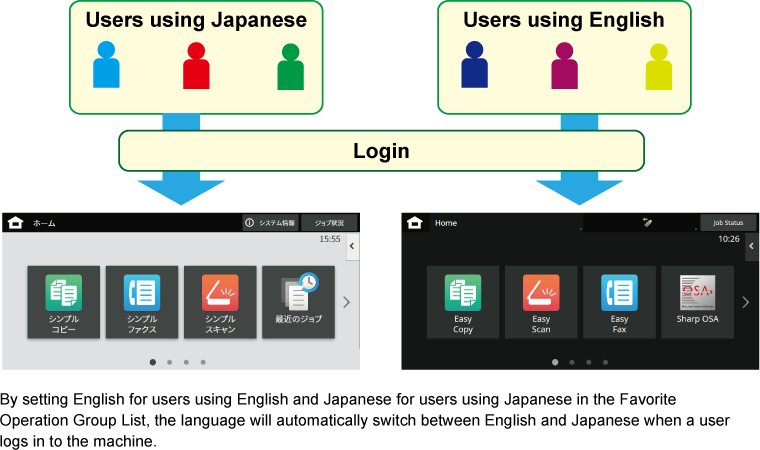You can perform user management such as registering
login users and specifying the user authentication method.
In [User Control] of "Settings (administrator)" and [System Settings]
of [Authentication Settings].
User Control allows you to register and manage the users who
use the machine.
By limiting the number of pages and functions that a user or a group
of users can use, incorrect use of the machine can be prevented.
To prevent unauthorized use, persons who are not registered can be
prohibited from using the machine or prohibited from using certain
functions.

A user can be registered
in an organization/group to enable sharing the contacts and group
information registered in that group. When counting all used pages,
you can check how many pages and what functions are used by each
group.
Multiple organizations/groups can be set for a user.

A Page Limit Group List
can be used to limit the number of sheets that users in a specific
group can use for copies or print jobs, and limit the number of
pages that can be scanned or faxed. The users can also be prohibited
from using certain functions.

Authority Group is used
to restrict the functions and settings that users who belong to
a specific group can use. By setting restrictions on functions and
settings, you can prevent inexperienced users from performing incorrect
operations and settings, and thereby enable safe use of the machine.
Main
authority types (Default Group List)

For each group, you can
register an environment with settings that are convenient for the
group. For example, if the users speak different languages, a language
can be set for each group, and this setting is applied automatically
at login (normally the display language cannot be changed each time
the machine is used).

You can join the Active Directory domain
(AD domain) of the machine, and easily perform user management on
the network.
On a network that does not have Active Directory enabled,
you must perform network device authentication for each device.
For this reason, one user must have multiple domain names
and passwords.
When you join an AD domain, you only need to be authenticated
once. After you are authenticated, the Active Directory server automatically
authenticates network devices. You can log in to multiple devices
on the network with a single domain name and password.
Version 06a / bp70c65_usr_06a_us